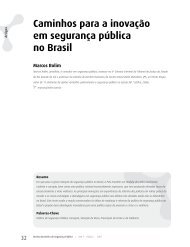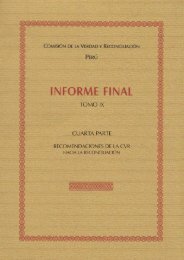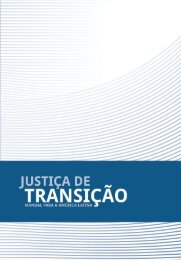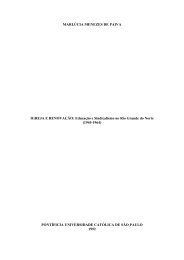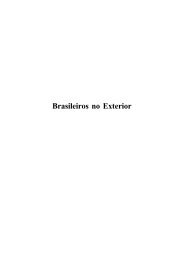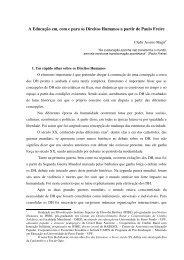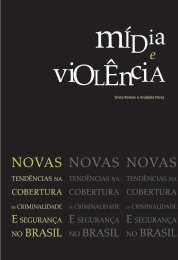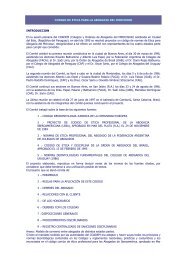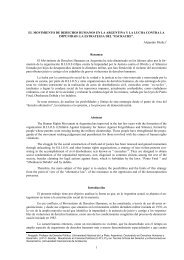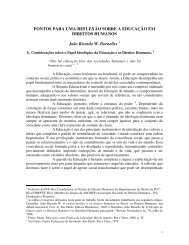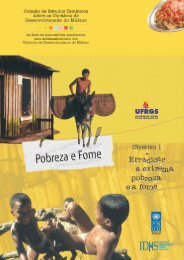ISSN 1677-1419 Ano 4, Vol. 4, Número 4 - 2003 - DHnet
ISSN 1677-1419 Ano 4, Vol. 4, Número 4 - 2003 - DHnet
ISSN 1677-1419 Ano 4, Vol. 4, Número 4 - 2003 - DHnet
Create successful ePaper yourself
Turn your PDF publications into a flip-book with our unique Google optimized e-Paper software.
HAL PEPINSKY<br />
Professor at Indiana University and Walden University.<br />
I thank the Institute for Human Rights<br />
very much for their invitation to write this article<br />
on restorative justice as a human right. As I<br />
understand it, “restorative justice” is a term that<br />
as far as I can see was coined by Presbyterian<br />
Church, U.S.A., Criminal Justice Office director<br />
Virginia Mackey in the mid-seventies. It became<br />
part of a North American movement toward<br />
“prison abolition”. I myself have been trained<br />
four ways in mediation, and have applied my<br />
training to mediation in a program of Canadian<br />
and U.S. Mennonites, the Victim Offender<br />
Reconciliation Program over the past six years. I<br />
have also been formally trained in law (then<br />
sociology), and have represented defendants in<br />
criminal court, advocated for people in numerous<br />
grievance fora, and qualified as an expert witness<br />
on a variety of criminal justice topics. In<br />
attempted recovery from the adversarial training<br />
that lies at the heart of the common-law tradition<br />
in which I was trained, I have chosen to try to<br />
understand and perfect the skill of mediation, as<br />
in restorative justice, instead.<br />
I learn from every attempt I make at<br />
mediation. To me, the key word in “restorative<br />
justice” is “restore”. I seek to help victims and<br />
offenders find ways that they all can restore<br />
whatever trust the “crime” at hand has cost them,<br />
so that they all become woven into safe, honest<br />
social relations rather than separated, as by<br />
imprisonment.<br />
I live in the global heartland of<br />
punitiveness. My country imprisons an entire<br />
quarter of the world total, and as I write my<br />
president is once again poised to launch launch<br />
international bloodshed. I also live in hope. I<br />
believe that as I learn mediation skills with<br />
hundreds of students most of all each year,<br />
especially in a required second-year class for<br />
criminal justice majors on “alternative social<br />
control systems”, I find students who are eagerly<br />
RESTORATIVE JUSTICE AS A<br />
HUMAN RIGHT<br />
to learn to concentrate on making peace instead of<br />
war. I believe that we learn peacemaking together<br />
by our growing awareness of what protection of<br />
human rights requires of us.<br />
Here is my only citation or reference in<br />
this essay: http://www.critcrim.org/critpapers/<br />
pepinsky-book.htm. A Criminologist’s Quest For<br />
Peace (2001) is the first book I have had<br />
published electronically rather than in hard copy,<br />
on the web site of the Critical Criminology<br />
Divisions of the American Society of<br />
Criminology and the Academy of Criminal<br />
Justice Sciences. There, it is available for free<br />
reading, copying, and use. The manuscript is<br />
strewn with references, which are listed at the<br />
end. Feel free to consult it for follow-up<br />
references, and for that matter, to contact me<br />
further for references to things I write here. I can<br />
well imagine that the readers of this journal are<br />
very well-read on human rights in their own right.<br />
My purpose here is simply to explain how my<br />
own understanding of how restorative justice as a<br />
human rights issue has evolved.<br />
THE FIRST HUMAN RIGHT<br />
From the Universal Declaration of Human<br />
Rights (1948):<br />
Article 1<br />
All human beings are born free and equal<br />
in dignity and rights. They are endowed with<br />
reason and conscience and should act towards one<br />
another in a spirit of brotherhood.<br />
These days, many of us would notice that<br />
Article 1 leaves out half of humanity – sisterhood.<br />
Correcting for that glaring omission, Article 1 to<br />
61



